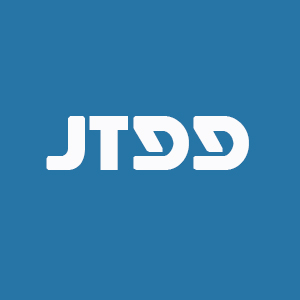REFERENCES
2. Beck T, Rowlands T, Shorter T, Brookes AJ. GWAS central: an expanding resource for finding and visualising genotype and phenotype data from genome-wide association studies. Nucleic Acids Res 2023;51:D986-93.
3. Landrum MJ, Lee JM, Benson M, et al. ClinVar: improving access to variant interpretations and supporting evidence. Nucleic Acids Res 2018;46:D1062-7.
4. Green ED, Guyer MS; National Human Genome Research Institute. Charting a course for genomic medicine from base pairs to bedside. Nature 2011;470:204-13.
5. Hu T, Chitnis N, Monos D, Dinh A. Next-generation sequencing technologies: an overview. Hum Immunol 2021;82:801-11.
6. The cost of sequencing a human genome. 2020. Available from: https://www.genome.gov/about-genomics/fact-sheets/Sequencing-Human-Genome-cost [Last accessed on 23 Oct 2023].
7. Chu ATW, Fung JLF, Tong AHY, et al. Potentials and challenges of launching the pilot phase of Hong Kong genome project. J Transl Genet Genom 2022;6:290-303.
8. Liu J, Hui RT, Song L. Precision cardiovascular medicine in China. J Geriatr Cardiol 2020;17:638-41.
9. Japan Agency for Medical Research and Development. GA4HG. 2022. Available from: https://www.amed.go.jp/en/aboutus/collaboration/ga4gh_gem_japan.html [Last accessed on 23 Oct 2023].
10. Global Alliance for Genomics & Health. GEM Japan releases largest-ever open-access Japanese variant frequency panel. 2022. Available from: https://www.ga4gh.org/news_item/gem-japan-releases-largest-ever-open-access-japanese-variant-frequency-panel/ [Last accessed on 23 Oct 2023].
11. Genomics Thailand. Available from: https://genomicsthailand.com/Genomic/home [Last accessed on 23 Oct 2023].
12. A twisted ladder to prosperity. Available from: https://www.nature.com/articles/d42473-020-00211-y [Last accessed on 23 Oct 2023].
13. Aviesan. Genomic medicine France 2025. 2022. Available from: https://solidarites-sante.gouv.fr/IMG/pdf/genomic_medicine_france_2025.pdf [Last accessed on 23 Oct 2023].
14. Genomics England. The 100,000 genomes project by numbers. Available from: https://www.genomicsengland.co.uk/news/the-100000-genomes-project-by-numbers [Last accessed on 23 Oct 2023].
15. Smedley D, Smith KR, Martin A, et al. 100,000 Genomes pilot on rare-disease diagnosis in health care - preliminary report. N Engl J Med 2021;385:1868-80.
16. Cookies on our future health. Available from: https://ourfuturehealth.org.uk/research-programme/ [Last accessed on 23 Oct 2023].
17. Genome UK: 2021 to 2022 implementation plan. Available from: https://www.gov.uk/government/publications/genome-uk-2021-to-2022-implementation-plan/genome-uk-2021-to-2022-implementation-plan [Last accessed on 23 Oct 2023].
18. Danish ministry of health. Personalised medicine for the benefit of the patients. 2022. Available from: https://eng.ngc.dk/Media/637614364621421665/Danish%20Strategy%20for%20personalised%20medicine%202021%202022.pdf [Last accessed on 23 Oct 2023].
19. Australian genomics. Available from: https://www.australiangenomics.org.au/our-history/ [Last accessed on 23 Oct 2023].
20. Stark Z, Boughtwood T, Phillips P, et al. Australian genomics: a federated model for integrating genomics into healthcare. Am J Hum Genet 2019;105:7-14.
21. Department of health and aged care, australian government. Genomics health futures mission. Available from: https://www.health.gov.au/initiatives-and-programs/genomics-health-futures-mission [Last accessed on 23 Oct 2023].
22. Genome Canada. Available from: https://genomecanada.ca/challenge-areas/all-for-one/ [Last accessed on 23 Oct 2023].
23. National human genome research institute. The undiagnosed diseases program. Available from: https://www.genome.gov/Current-NHGRI-Clinical-Studies/Undiagnosed-Diseases-Program-UDN [Last accessed on 23 Oct 2023].
24. Saudi genome program. Available from: https://www.vision2030.gov.sa/en/projects/saudi-genome-program/ [Last accessed on 23 Oct 2023].
25. BBMRI-ERIC. Turkish genome project launched. Available from: https://www.bbmri-eric.eu/news-events/turkish-genome-project-launched/ [Last accessed on 23 Oct 2023].
26. Özçelik T. Medical genetics and genomic medicine in Turkey: a bright future at a new era in life sciences. Mol Genet Genomic Med 2017;5:466-72.
27. Chung CCY, Hong Kong Genome Project, Chu ATW, Chung BHY. Rare disease emerging as a global public health priority. Front Public Health 2022;10:1028545.
28. Chung BHY, Chau JFT, Wong GK. Rare versus common diseases: a false dichotomy in precision medicine. NPJ Genom Med 2021;6:19.
29. Posey JE, O’Donnell-Luria AH, Chong JX, et al. Insights into genetics, human biology and disease gleaned from family based genomic studies. Genet Med 2019;21:798-812.
30. Karczewski KJ, Francioli LC, Tiao G, et al. The mutational constraint spectrum quantified from variation in 141,456 humans. Nature 2020;581:434-43.
31. Census and statistics department, Hong Kong special administrative region. Table
32. Census and statistics department, Hong Kong special administrative region. 2016 population by-census: summary results. Available from: https://www.bycensus2016.gov.hk/data/16bc-summary-results.pdf [Last accessed on 23 Oct 2023].
33. The steering committee of genomic medicine, Hong Kong special administrative region. Strategic development of genomic medicine in Hong Kong. 2022. Available from: https://www.healthbureau.gov.hk/download/press_and_publications/otherinfo/200300_genomic/SCGM_report_en.pdf [Last accessed on 23 Oct 2023].
34. Hong Kong genome institute. strategic plan 2022-25. Available from: https://hkgp.org/ebook/HKGI-Strategic-Plan/ [Last accessed on 23 Oct 2023].
35. Van der Auwera G, O’Connor B. Genomics in the cloud: using docker, GATK, and WDL in Terra, 1st edition. Sebastopol, CA: O'Reilly Media 2020.
36. Li H. Aligning sequence reads, clone sequences and assembly contigs with BWA-MEM. 2013. Available from: https://ui.adsabs.harvard.edu/abs/2013arXiv1303.3997L/abstract [Last accessed on 23 Oct 2023].
37. Picard tools. Version 2.17.8. Broad institute, GitHub repository. Available from: http://broadinstitute.github.io/picard/ [Last accessed on 23 Oct 2023].
38. McLaren W, Gil L, Hunt SE, et al. The ensembl variant effect predictor. Genome Biol 2016;17:122.
39. Danecek P, Bonfield JK, Liddle J, et al. Twelve years of SAMtools and BCFtools. Gigascience 2021;10:giab008.
40. Smedley D, Jacobsen JO, Jäger M, et al. Next-generation diagnostics and disease-gene discovery with the Exomiser. Nat Protoc 2015;10:2004-15.
41. Martin AR, Williams E, Foulger RE, et al. PanelApp crowdsources expert knowledge to establish consensus diagnostic gene panels. Nat Genet 2019;51:1560-5.
42. Richards S, Aziz N, Bale S, et al. Standards and guidelines for the interpretation of sequence variants: a joint consensus recommendation of the American college of medical genetics and genomics and the association for molecular pathology. Genet Med 2015;17:405-24.
43. Hall L, Wilson JA, Bernard K, et al. Establishing molecular testing in clinical laboratory environments; Proposed guideline. 2011. Available from: https://clsi.org/media/1474/mm19a_sample.pdf [Last accessed on 23 Oct 2023].
44. Aysal A, Pehlivanoglu B, Ekmekci S, Gundogdu B. How to set up a molecular pathology lab: a guide for pathologists. Turk Patoloji Derg 2020;36:179-87.
45. Marshall CR, Chowdhury S, Taft RJ, et al. Best practices for the analytical validation of clinical whole-genome sequencing intended for the diagnosis of germline disease. NPJ Genom Med 2020;5:47.
46. Aziz N, Zhao Q, Bry L, et al. College of American pathologists’ laboratory standards for next-generation sequencing clinical tests. Arch Pathol Amp Lab Med 2015;139:481-93.
47. Bogdanova N, Markoff A, Gerke V, McCluskey M, Horst J, Dworniczak B. Homologues to the first gene for autosomal dominant polycystic kidney disease are pseudogenes. Genomics 2001;74:333-41.
48. Hübschmann D, Schlesner M. Evaluation of whole genome sequencing data. Methods Mol Biol Clifton N J 2019;1956:321-36.
49. Ribarska T, Bjørnstad PM, Sundaram AYM, Gilfillan GD. Optimization of enzymatic fragmentation is crucial to maximize genome coverage: a comparison of library preparation methods for Illumina sequencing. BMC Genom 2022;23:92.
50. Kozarewa I, Ning Z, Quail MA, Sanders MJ, Berriman M, Turner DJ. Amplification-free Illumina sequencing-library preparation facilitates improved mapping and assembly of (G+C)-biased genomes. Nat Methods 2009;6:291-5.
51. Quail MA, Swerdlow H, Turner DJ. Improved protocols for the illumina genome analyzer sequencing system. Curr Protoc Hum Genet 2009;62:18.2.1-27.
52. Rehm HL, Page AJH, Smith L, et al. GA4GH: international policies and standards for data sharing across genomic research and healthcare. Cell Genom 2021;1:100029.
53. Retterer K, Juusola J, Cho MT, et al. Clinical application of whole-exome sequencing across clinical indications. Genet Med 2016;18:696-704.
54. Lee H, Deignan JL, Dorrani N, et al. Clinical exome sequencing for genetic identification of rare Mendelian disorders. JAMA 2014;312:1880-7.
55. Chung CCY, Hue SPY, Ng NYT, Doong PHL, Chu ATW, Chung BHY. Meta-analysis of the diagnostic and clinical utility of exome and genome sequencing in pediatric and adult patients with rare diseases across diverse populations. Genet Med 2023;25:100896.
56. Scocchia A, Wigby KM, Masser-Frye D, et al. Clinical whole genome sequencing as a first-tier test at a resource-limited dysmorphology clinic in Mexico. NPJ Genom Med 2019;4:5.
58. Xing L, Shen Y, Wei X, et al. Long-read Oxford nanopore sequencing reveals a de novo case of complex chromosomal rearrangement involving chromosomes 2, 7, and 13. Mol Genet Genom Med 2022;10:e2011.
59. Roberts HE, Lopopolo M, Pagnamenta AT, et al. Short and long-read genome sequencing methodologies for somatic variant detection; genomic analysis of a patient with diffuse large B-cell lymphoma. Sci Rep 2021;11:6408.
60. Chung BHY, Kan ASY, Chan KYK, et al. Analytical validity and clinical utility of whole-genome sequencing for cytogenetically balanced chromosomal abnormalities in prenatal diagnosis: abridged secondary publication. Hong Kong Med J 2022;28:4-7.
61. Garalde DR, Snell EA, Jachimowicz D, et al. Highly parallel direct RNA sequencing on an array of nanopores. Nat Methods 2018;15:201-6.
62. Sakamoto Y, Sereewattanawoot S, Suzuki A. A new era of long-read sequencing for cancer genomics. J Hum Genet 2020;65:3-10.
63. Turner H. Clinical long-read sequencing. WYNG foundation briefing. 2022. Available from: https://www.phgfoundation.org/briefing/clinical-long-read-sequencing [Last accessed on 23 Oct 2023].
64. Turner H. Long-read sequencing: clinical applications and implementation. WYNG foundation briefing. 2022. Available from: https://www.phgfoundation.org/briefing/lrs-clinical-applications-and-implementation [Last accessed on 23 Oct 2023].
65. Sanford Kobayashi E, Batalov S, Wenger AM, et al. Approaches to long-read sequencing in a clinical setting to improve diagnostic rate. Sci Rep 2022;12:16945.
66. Rood JE, Maartens A, Hupalowska A, Teichmann SA, Regev A. Impact of the human cell atlas on medicine. Nat Med 2022;28:2486-96.
67. Alfaro JA, Bohländer P, Dai M, et al. The emerging landscape of single-molecule protein sequencing technologies. Nat Methods 2021;18:604-17.
68. Tang X, Huang Y, Lei J, Luo H, Zhu X. The single-cell sequencing: new developments and medical applications. Cell Biosci 2019;9:53.
70. Cuomo ASE, Nathan A, Raychaudhuri S, MacArthur DG, Powell JE. Single-cell genomics meets human genetics. Nat Rev Genet 2023;24:535-49.
71. Sreenivasan VKA, Balachandran S, Spielmann M. The role of single-cell genomics in human genetics. J Med Genet 2022;59:827-39.
72. Lei Y, Tang R, Xu J, et al. Applications of single-cell sequencing in cancer research: progress and perspectives. J Hematol Oncol 2021;14:91.









